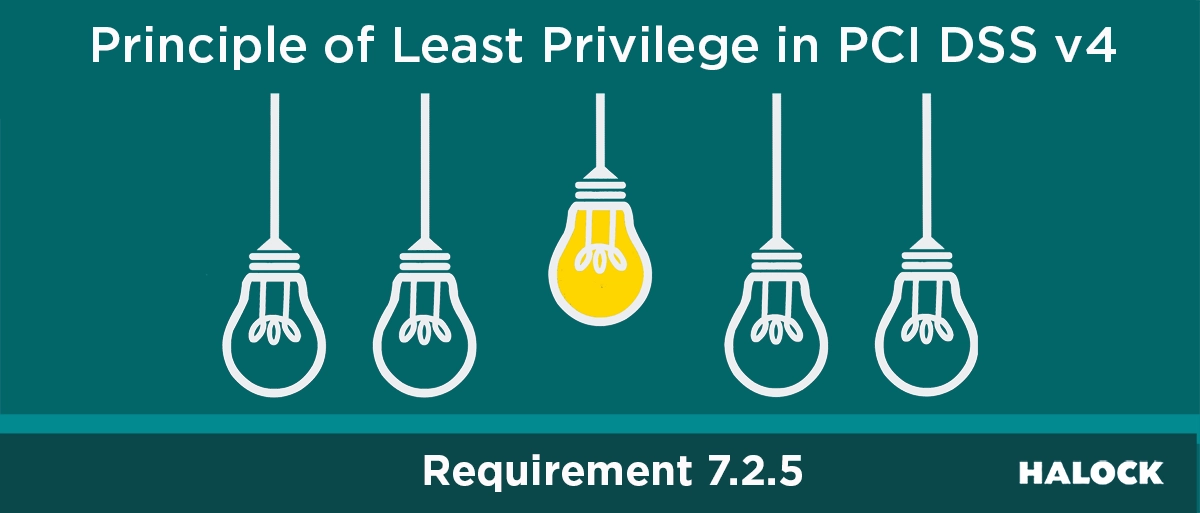Least Privilege Takes Center Stage in PCI DSS Update
In today’s digital landscape, organizations recognize that completely preventing cyberattacks is nearly impossible. As a result, the principle of least privilege (PoLP) has become a cornerstone of modern cybersecurity strategies. By restricting user account permissions to the minimum required for specific tasks, PoLP minimizes the potential damage from breaches, unauthorized access, and insider threats.
What is the PCI DSS v4.0.1 Requirement for PoLP?
The principle of least privilege applies to more than employees or active users. Starting March 31, 2024, PCI DSS v4.0.1 Requirement 7.2.5 expands its scope to include application and system accounts. Organizations must ensure that all accounts—whether tied to users or software processes—have only the permissions necessary for their function. To comply with this requirement, organizations should:
- Define Roles and Responsibilities: Assign accountability for managing application and system accounts.
- Use Role-Based Access Control (RBAC): Simplify privilege management by aligning access controls with role definitions.
- Establish Baseline Configurations: Create and enforce minimum access requirements to prevent unnecessary privileges.
Additionally, access must be limited to the systems, applications, or processes that specifically require their use.
Periodic Review of Access Privileges
PCI DSS Requirement 7.2.5.1 mandates that access privileges for application and system accounts are reviewed periodically, as determined by the organization’s Targeted Risk Analysis (TRA). Reviews ensure that:
- Access remains appropriate for the functions being performed.
- Inappropriate access is identified and addressed.
- Management formally acknowledges that access is appropriate.
Documenting these reviews is essential for maintaining compliance and ensuring audit readiness.
Protecting Application and System Account Credentials
Passwords or passphrases for application and system accounts must also meet stringent protections under PCI DSS Requirement 8.6.3. These passwords must:
- Be changed periodically and upon suspicion or confirmation of compromise.
- Be constructed with sufficient complexity appropriate to the defined rotation frequency and the sensitivity of the account.
Organizations should define password rotation policies as part of their Targeted Risk Analysis (TRA) in accordance with PCI DSS Requirement 12.3.1, ensuring that password policies align with operational needs and security best practices.
Lessons from Recent Breaches
Recent cyberattacks highlight how enforcing least privilege could mitigate the impact of compromised accounts:
- Okta Support System Breach (2023): Attackers accessed customer data through a third-party engineer’s account. Enforcing separation of duties and limiting privileges could have minimized exposure.
- Uber Data Breach (2022): A hacker leveraged stolen credentials to access internal systems and found hardcoded admin passwords. Implementing PoLP could have prevented lateral movement across the network.
How HALOCK Can Help
Implementing the least privilege for system and application accounts as required by PCI DSS v4.0.1—particularly Requirements 7.2.5 and 8.6.3—requires careful planning. HALOCK assists organizations in completing a Targeted Risk Analysis (TRA) that is aligned with the Duty of Care Risk Analysis (DoCRA) principles and practices for analyzing risks that addresses the interests of all parties potentially affected by those risks. This collaboration ensures that your organization’s compliance efforts are properly evaluated, documented, and balanced with operational needs to provide reasonable and compliant security.
Through this approach, HALOCK can assist with:
- Reviewing Your Plans: HALOCK works with your team to review remediation plans for system and application account management access controls, ensuring they meet PCI DSS expectations.
- Guidance on Control Requirements: Our QSAs provide clarity on Requirement 7.2.5 and 8.6.3, helping you understand system and application account requirements.
- Ensuring Audit-Readiness: HALOCK can validate documentation and processes to ensure compliance prior to PCI DSS validations.
- Risk Analysis Expertise: Utilizing the Duty of Care Risk Analysis (DoCRA) principles for analyzing risks that addresses the interests of all parties potentially affected by those risks, for the PCI DSS Targeted Risk Analysis (TRA) requirements, we help ensure your system and application account controls are both compliant and reasonable for your organization’s size and complexity.
HALOCK ensures your approach to the least privilege for system and application accounts balances security with business needs while staying compliant with PCI DSS v4.0.1 requirements.
Start Your Compliance Journey Today
The evolution of PCI DSS brings stricter controls, and the principle of least privilege plays a critical role in compliance. HALOCK provides the guidance you need to confidently meet Requirement 7.2.5, Requirement 8.6.3, and other mandates in PCI DSS v4.0.1.
Take the next step toward compliance by visiting our PCI DSS services page or contacting us directly.
By Viviana Wesley, PCI QSA, ISO 27001 Auditor, CISM – Principal Consultant, Governance, Compliance and Engineering Services and Jason Maiden, CISSP, PMP, PCI QSA, ISO 27001 Lead Auditor – Managing Consultant

